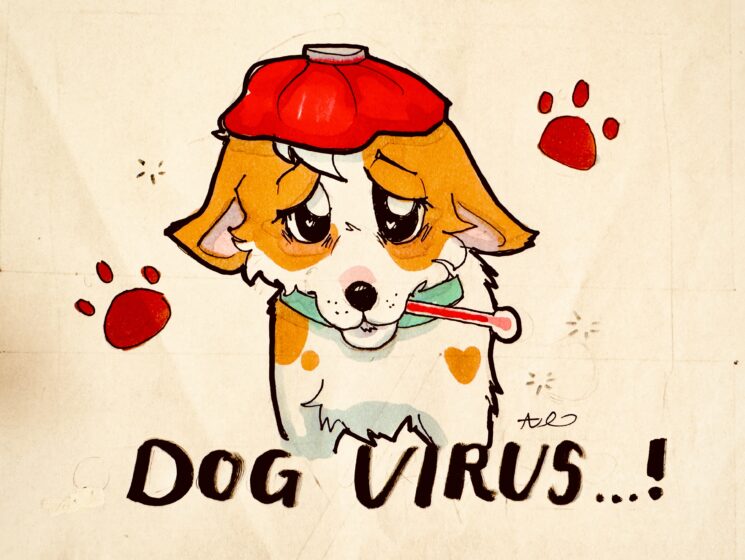
By Caroline Mora
In recent months, there has been an increase in the number of canine respiratory illness cases across the United States. Dog parents are worried, and veterinarians are puzzled. What is it and how can we keep our furry friends safe?
What is canine influenza?
Canine influenza, also known as dog flu, is a virus with two main strains: H3N8, which comes from the equine family (horses, zebras, donkeys, etc.), and H3N2, which originates from birds. Dogs are susceptible to both strains, but cats may be infected by H3N2 as well. There is no evidence to support that humans have ever been infected with canine influenza.
Symptoms of dog flu include coughing, fever, runny nose, lethargy, lack of appetite and, in more severe cases, pneumonia. These symptoms usually persist for about two to three weeks, but this new strain lasts up to eight weeks. This dog flu is highly contagious and airborne, just like our human influenza strains. It’s not like your dog can wear a mask to protect themselves, so how do they avoid getting sick?
Why is this happening?
One popular idea is that due to the lack of socialization through and after the COVID-19 pandemic, dogs have been left with a weak immune system. If dogs were properly socialized, the dogs would have been exposed to the usual pathogens and built immunity.
Another reason for the increase in cases could also be due to a decrease in vaccination rates. If a dog doesn’t get vaccinated, they can get multiple illnesses at once. A human example of this is last year’s “tripledemic” with influenza, RSV and COVID-19.
Dogs that are at risk for contracting pneumonia along with the dog flu are brachycephalic, or flat-faced, including pugs, French bulldogs and senior dogs with underlying health issues.
How does this impact the community?
“I have had a few consumers ask about [dog flu], but I haven’t encountered it in my shop,” Tonya Moore, owner of The Arc Pet Salon in Seal Beach said.
This illness has just begun to impact local businesses but not by a detrimental amount. Cases have not risen to extremes in Orange County yet, making it easier for businesses to, well, stay in business. In other states such as Oregon, businesses have been impacted significantly because cases are a lot more common and severe.
Moore also mentioned that her customer’s dogs typically don’t go to “dirty dog parks” where they would be able to contract this sickness.
How can I prevent this?
A great way to steer clear of canine influenza is to quarantine your dog. Essentially, that means no dog parks, daycare, grooming or any other kind of interaction with dogs outside of your home. You can still take your dog on walks and make sure they get much-needed exercise but try to take them places where there are not many other dogs.
You can always keep up with your dog grooming yourself. If your furry friend has a longer coat, they should get brushed once or twice a day to avoid matting, and short-haired dogs could be brushed or wiped down once a day. Brushing your dog not only helps them stay clean but will also decrease the amount of shedding they do in your home.
Your pet can only contract the dog flu if they come into contact with another infected dog or direct contact with the pathogen. The chances of your dog getting extremely ill are slim but not impossible. If there was ever a time to be a responsible dog owner, it is now. You may use this extra time at home with your fur baby to teach them new tricks, like ‘sit pretty’ or take the time to cuddle up under the blankets and spend quality time with your animal.





